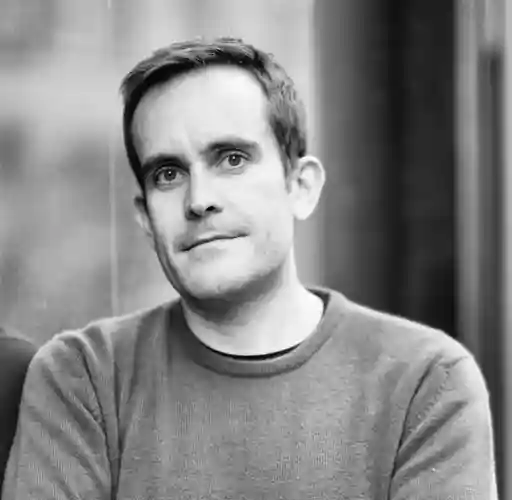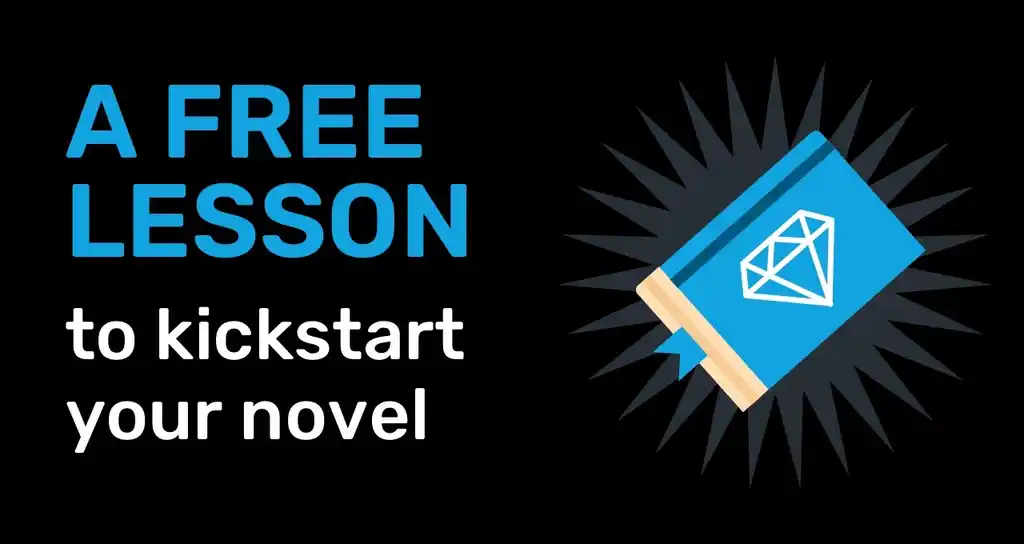This transcript has been lightly edited for clarity. To work with Edmund on your next thriller, head to his profile on Reedsy.
I've written four novels, a book of short stories and some poems. You can find those on Amazon, or you can go to my website EdmundPickett.com. I've also been editing for about four years. My first editing job was with Mark Dawson, who was the one to recommend me to Reedsy. In the couple of years that I've worked for Reedsy, I've edited up about 60 novels, most of them from first-time writers.
So by now, I think I've seen most of the mistakes that a new author can make. Here are the biggest ones.
1. Don't overkill it on the backstory
I have a few things that I've noticed about backstory in particular. At its simplest, backstory is a good thing. Every character in a novel will have some backstory. That just means whatever happened to them in life up until the point when the novel begins. In the 18th and 19th centuries, backstory was usually given to the readers in the form of a big dump. When a new character was introduced, the author would then back up and tell you the entire life story of that character, starting in primary school.
This meant that, for three or four pages, you were learning everything about this character. But the business of the novel and the plot would stop dead. This nowadays is considered a very weak technique, and in fact it's called the backstory dump. You can imagine a large truck backing up and dumping a couple of tonnes of something smelly right in the middle of your novel. It destroys the flow of your story.
The more modern technique is to deliver just a little bit of backstory here and there — as you're going through your novel and only when it's necessary. I'm not saying you shouldn't write full backstories of most of the characters in your novel. That's actually a good technique! But don't get confused and think all those backstory files you're writing on your characters should be part of the novel — they're not.
If you want to write 10 or 20 pages about the previous history of half a dozen characters in your book, go ahead. That's useful because you become more and more familiar with those characters. In the process of doing that, you will also begin to hear how those characters speak and act, and that's very useful. But once you finished all those backstory documents, put it in a folder on your computer and don't look at them anymore. This way, you'll only remember the good parts and forget all the boring parts.
2. Don't rely too much on your first draft
This ties in with a theory I've had for a long time: memory is the best editor. When you're revising your first draft, and going to a second draft, I think you should read the first draft once all the way through, then put it away. Go ahead and start your second draft without having that first draft sitting on the desk in front of you. When you look at the previous draft while writing a new draft, you save too much. You don't notice the clumsiness. You repeat it and copy the clumsy sentences from one draft to the next.
When you're revising and rewriting by memory, your mind automatically forgets the awkward sentences. You just remember the good parts. You can try this by yourself. Revise a couple of chapters in your head, then type them out. Once you're done, check the word count of the first version and the second version. I think you'll discover that the second version is shorter and more vivid.
This is the advantage of not looking at your backstory files after you've written them. Preparing all of that information was useful. It was a good thing to do, but don't dump all that into your story, because your readers will get halfway through the life story of character X, and they'll suddenly realise that checking the text messages on their phone sounds like something more fun to do. Or maybe they'll want to go to the kitchen and get a snack, and you just lost a reader.
3. Backstory should be like a tease
Mark Dawson says that he wants to write unputdownable fiction, and that should also be your goal. Don't give you readers an excuse to put down their Kindle. A backstory dump is a real good way to make readers think they've got something else more interesting to do. A few years ago, Mark Dawson had an anthology he was offering for 99 cents, called Thriller 13. It contained 13 novellas. One of them was by Simon Wood and it was called Lowlifes. It has the best use of backstory that I remember seeing in a long, long time.
It begins with a man who's passed out drunk on the side of a street in San Francisco. He wakes up only because someone is robbing him. He jumps up and announces that he's a police detective, which scares off the robber, and then the man realises he doesn't even know where he left his car, which is kind of a big mistake for a policeman. He begins running to the next location he can think of, and that sets the tone for the entire book. He's on the move constantly, because very soon he realises someone is trying to frame him for murder.
So he's on the run throughout the whole novella, and about every two or three pages he drops a little hint. (This book as told in the first person.) Every two or three pages, he says something about his past, never very much. It answers some of the questions you have, but provokes three or four more questions. You can't figure out who this guy is. You become invested in his story. You identify with him trying to clear his name of this murder rap. Yet every time he says something, you realise he's a real scumbag! You don't like him, but you become interested in him.
One of the reasons this works is because he's being very sparing with the backstory. He only tells you one thing, leaving you wondering two or three more things. Then he keeps on running. The plot never slows down.
This is how backstory should work. You never tell the readers anything about the previous history of character until they have to know it — until they would be hopelessly confused without that particular bit of information. Then you give it to them and try to make them even more curious about what else you haven't told them.
Backstory done like this is a tease. You're teasing your readers, you're creating suspense, you're making them want to find out more. It's like the old show business axiom: always leave the audience wanting more. Don't keep telling jokes until they're tired of you. Don't sing one more song — leave when they're still hungry for more, and that's the way you should look at backstory.
4. Know what type of editing you need
There are three kinds of editing:
- Proofreading: The simplest. This deals with spelling and punctuation.
- Copyediting: This involves untangling complicated sentences and things like that. That's on the sentence level.
- Developmental editing: This covers everything that takes place over the course of the entire novel. Developmental editing looks at the plot, characters, and the flow of ideas through the book.
I've had people request developmental editing on a fragment of a book, which shows me that they don't really know what's going on with developmental editing. People send me a 10,000 word sample, and want a developmental edit. But if I don't know how the book is going to end, how do I know if the parts are proportioned properly? This is the number one word that applies in developmental editing, and that is proportion. As a developmental editor, I have to point out if a minor character has too much space, if the author is wasting too many words on his hobby, or if there are dangling plot threads that never are resolved. These are difficult things for an author to spot.
I recently edited a book that had five main characters. One of them probably had as many words devoted to him as to the other four put together. It was clear that the author identified strongly with this character. He lovingly described his entire history: a paragraph here, a paragraph there. By the end of the book, we knew that the author really loved this character. The problem was this character doesn't do anything in the book. The other four characters carried the plot themselves. It involved crooked generals, and smuggling, and explosions and gang war, all kinds of things. These other four characters were actively involved in all of that. This fifth character that I'm talking about only delivered a letter from one place to another. That was his contribution to the book. I kept waiting for him to step up and do something significant. Now, the author didn't realise that his book was completely out of balance because one character, obviously his favourite, wasn't doing anything. So I told him, delete this character — or give him an integral part in your plot.
This is the kind of thing that authors usually don't notice. And that's what developmental editors are for. Aside from the fact that you can't do a developmental edit on a fragment, it's a misconception among a lot of beginning writers that they don't need developmental edits. Probably 50 of the books I've edited were by new authors, and maybe 20 of those people thought they didn't need developmental editing. They had finished their first novel, and they were convinced that all it needed was a little touching up, a little bit of proofreading perhaps, or copyediting. Not developmental editing. Well, they were all wrong.
They had all the problems I've been talking about: imbalanced characterizations, too much time devoted to the author's hobby, minor characters taking up too much space, as well as absurdities in the plot. So I would say, just based on the experience that I've had in over almost two years of seeing a lot of novels: if you think you don't need developmental editing, you're wrong. That's the first thing you should do. If your editor then tells you, "This is a great story, these are great characters," you've got something here. Only then you're ready for proofreading and copyediting. Those are the last things you should do.
5. Don't trust your family or friends
Here's something else: if you're a beginning author, go with the developmental edit first, and don't trust your family or friends. They won't tell you the truth.
I've had three or four manuscripts that I had to tell the authors I didn't think that could be saved. And I've had some others where I delivered reports that I'm sure the authors found it painful to read. One man that I sent off a pretty tough report didn't comment right away. 10 days later, however, he sent me a message and said, "When I got your report, I was almost suicidal. I felt I had been kicked in the solar plexus, I couldn't think about it for a week. Then I went back and read your report again, and I realised that I agreed with most of what you said, and that I had suspected all those weaknesses, but I guess I was hoping no one would notice. After another couple of days I showed your report to my wife, and she said, yeah, that's about right. And I said to her, wait a minute, why didn't you say that the first time you read it? And she said, because we're married.
That's a good example of why you can't trust your friends and family. They are your friends and they won't tell you the truth.
5. Know the genre
Thrillers frequently overlap with mysteries, but mysteries are usually lack bloodlust. There's a lot of deduction and questioning of witnesses, but there's usually not an awful lot of bloodshed.
In thrillers, you usually have, well, more explosions and car chases, and the main character is usually in jeopardy. He's risking life and limb. That's one of the main differences. Nowadays, in thrillers, international affairs are prominent. There are plots and counter plots among major nations, terrorism, things like that.
Occasionally, you'll have a lead character in a thriller who doesn't fit that mould. But over the course of a book, he'll rise to the occasion and become an impressive thriller operative, so to speak. You don't have to have somebody who's 6'5'' with special forces training to be the main character in a thriller, but you do have to have somebody who can act fast when the situation demands.
Recently, I edited a book, and the main character was constantly afraid that this beautiful woman with which he was involved was going to leave him, and such. And he wasn't sure that he could do this, or he could do that. And I had to tell the author, this guy has got to man up, stop doubting himself, and stop questioning his girlfriend. He wrote a second version of it. I edited version two. He did a really good job of taking away all of the dithering from his character, and making it believable. The man starts out unsure of himself, but in every scene he becomes more and more Jack Reacher-like, so to speak. And that's a good way to do it. It surprises the readers. They like to see that kind of growth. They imagine that they themselves in a tough situation could rise to the occasion.
So, look, if you're writing a series like the Jack Reacher ones, you can have an arc for three books. But I don't think you can really have an arc for 30 books. You can have changes. You can have major changes over the course of time. At the end of 20 books, you can have one character retire, and another character step up to carry on the flag, so to speak. Another series of book I like are the Roman mysteries by Lindsey Davis. I think she wrote about 19 books about a Roman detective, and then she retired him, and his stepdaughter took over. And now she's written about seven books with her as the main character. And that worked very well for her. It was a good way to start a new arc. I think she knew that the old arc was about played out.
5. Start in the middle
I usually tell people you don't have to have blood and explosions in Chapter One, but you probably should have it in Chapter Two if you don't. You don't start at the beginning, you start in the middle of the action. Then, of course, you have to jump back a little bit and explain how we got there, and how this battle began.
But it is important to realise that, in thrillers, there has to be constant movement in the plot. It doesn't all have to be gunshots and knife fights, but you do have to have something significant happening pretty often. You don't want to lose your readers, and they expect to be on the edge of their seats fairly often.
Also, revolvers don't have safeties. So now you know. Semi-automatics usually have safeties, but revolvers don't. You wouldn't believe how many times I've run across that mistake.





